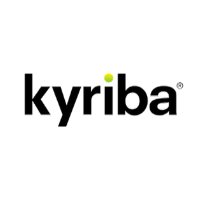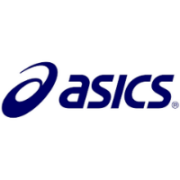Liquidity Benefits From Dynamic Discounting in Supply Chain Financing
10-05-2021 | treasuryXL | Kyriba |
It might not always be obvious where business can learn lessons from somewhere like yacht racing, particularly in more specialist fields like Supply Chain Finance and Dynamic Discounting. But there are often uncanny parallels from this sport and finance, when both seek to deploy serious sums of money and leading-edge technology to deliver the marginal gains that can mean the difference between winning and losing.
I thought this was particularly evident in the recent America’s Cup yacht racing challenges in New Zealand. Those AC75 mono-hull super yachts that raced around the bays off Auckland often travelled at a logic-defying 40-50 knots, twice as fast as the winds that powered them and seemingly in defiance of both gravity and conventional sailing speed barriers.
Liquidity Made Good
The key to having one AC75 go faster than an almost identical competitor is the ability to analyse masses of data points in real-time to make the required adjustments to sails, rudders, weights and foils in order to attack the optimum route to the finish at maximum speed. It’s a concept called Velocity Made Good, with VMG now the go-to acronym that defines winners in America’s Cup racing. Perfecting VMG was the reason the New Zealand boat successfully beat its global challengers – again.
I was particularly struck by how this VMG-led transformation of yacht racing, now cascading down from the pinnacle of the sport to the club level, is not dissimilar to how a focus on technology-led cash and liquidity management is liberating corporate balance sheets. We could even refer to it as Liquidity Made Good, where, by the way, velocity also matters.
New Level Playing Field
The deployment of more powerful technologies can improve decision-making, release resources from previously opaque silos and supply chains, and deliver new competitive advantage. Historically this was only available to those high-tech firms and financial institutions with deep pockets, just like the owners of America’s Cup yachts, because of the almost prohibitive cost of computing power, data storage and analytics.
But cloud-based software platforms, the blossoming of data analytics, ubiquitous access to near-unlimited data storage and the power of connectivity-as-a-service now ensures, like in yachting, that these benefits filter down from the elite to level the playing field.
Greater Flexibility, Visibility
In particular, the once sleepy backwaters of trade finance are now waking up to new opportunities to maximise cash resources in ways that not only strengthen supplier relationships, but also enhance Corporate Social Responsibility credentials. Early Payment Discounting has been around trade finance for many years. But persistent, ultra-low interest rates and expectations of greater flexibility now demand more creative solutions from Treasurers. Answers to which technology can now help to provide.
Dynamic Discounting
Within the broader field of Supply Chain Finance, firms can now use technology to transform early payment schemes into Dynamic Discounting. These can be deployed as an integral part of wider working capital management, where better visibility can optimise liquidity and improve profitability. It might seem just a simple method of paying invoices earlier, particularly for businesses with surplus cash that can benefit both parties involved. But how it is managed becomes critical to the outcome.
Win-Win Solution
For Dynamic Discounting to succeed, it needs to be sufficiently flexible (dynamic) as to how and when suppliers are paid, with payments made prior to due dates at a discount to original invoice values calculated on a sliding scale. This means that the earlier the buyer pays a supplier, the greater the discount. The discount is therefore “dynamic” in relation to the number of days until the invoice due date and avoids the previous “cliff edge” difference between simply either having a discount or not.
Most importantly, suppliers get continuously paid earlier, which improves their liquidity position and which could then allow them to pay their own suppliers earlier, invest more in their business or alternatively just do more business with the buyer.
Funding Flexibility
For a cash-rich buyer operating in a low interest environment, the benefit is obvious. Rather than leaving liquidity in a low-interest account, it can pay large invoices early to receive additional discounts and strengthen profitability. For instance, if a buyer receives a 2% discount for paying a 90-day-net invoice after 30 days, it can invest the amount for 60 days and receive a return. This is the equivalent of a just over 10% annual return on capital that would far outweigh any loss of interest.
The buyer is fully in control of how this program is run, determining how much funding capital to set aside and adjusting that capital as seasonal liquidity fluctuates. Any seasonal liquidity issues could then also be managed by pairing the dynamic discounting program with a traditional SCF program. This would also allow the flexibility for third-party funding to fill any gaps that emerged due to potential, or periodic, lower cash balances available for the original arrangement.
Besides earning a return on excess cash, Dynamic Discounting can also reduce supply chain risks (in that financially more stable suppliers mean reduced supplier risk) and then strengthen supplier relationships. Conversely, on the supplier side it improves cash flow and provides early payment options, both of which save time, puts cash into accounts sooner and increases liquidity visibility. Benefits everywhere!
CSR Benefits – Risk Free Returns
There’s no such thing as a free lunch, but there are other compensating benefits to offset the initial costs of implementing a modern Dynamic Discounting plan, not least of which can be a significant increase in ROI on otherwise dormant cash without increased risk. After all, you are only effectively paying existing suppliers early, who you have to pay anyway, free of any additional counterparty risk.
And, as I mentioned earlier, today’s much more keenly scrutinised CSR credentials can also be significantly burnished by the support provided to often much-smaller suppliers down the food chain. That can then be more widely communicated directly to CSR scoring tables which, in turn, recognise responsible buyers and suppliers.
So, to get the maximum benefit of the wind in your sails and the best performance from your assets, make sure you use the right technology to strengthen decision making. After that, understanding the challenge, minimising the risks and reaping the mutual rewards of Dynamic Discounting will enable much smoother sailing and help you optimise your liquidity!











